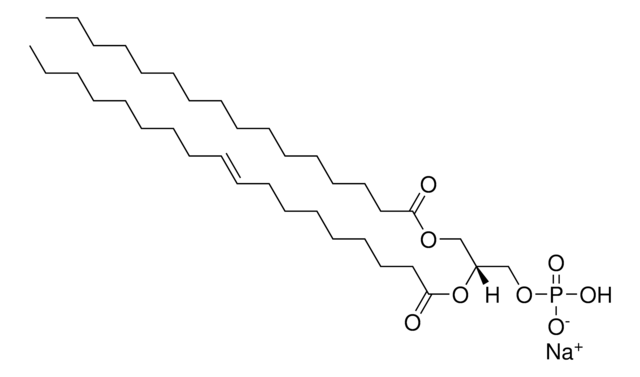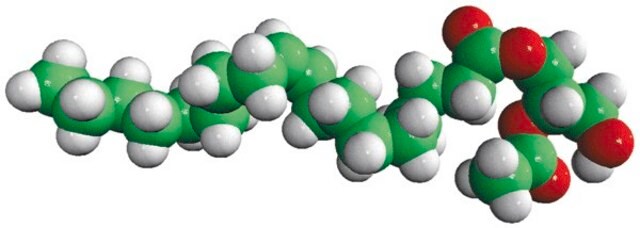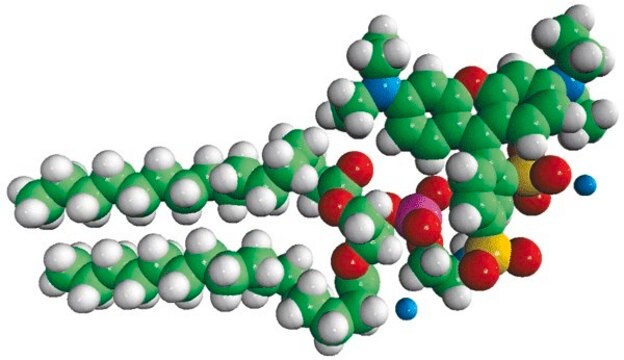Kluczowe dokumenty
840034P
Avanti
16:0-18:1 PS (POPS)
Avanti Research™ - A Croda Brand
Synonim(y):
1-hexadecanoyl-2--(9Z-octadecenoyl)-sn-glycero-3-phospho-L-serine (sodium salt); POPS; PS(16:0/18:1(9Z)); 110669
About This Item
Polecane produkty
opis
1-palmitoyl-2-oleoyl-sn-glycero-3-phospho-L-serine (sodium salt)
Próba
>99% (TLC)
Postać
powder
opakowanie
pkg of 1 × 10 mg (840034P-10mg)
pkg of 2 × 100 mg (840034P-200mg)
pkg of 5 × 100 mg (840034P-500mg)
pkg of 1 × 25 mg (840034P-25mg)
producent / nazwa handlowa
Avanti Research™ - A Croda Brand
typ lipidu
phospholipids
cardiolipins
Warunki transportu
dry ice
temp. przechowywania
−20°C
ciąg SMILES
[H][C@@](COP([O-])(OC[C@](C([O-])=O)([H])[NH3+])=O)(OC(CCCCCCC/C=C\CCCCCCCC)=O)COC(CCCCCCCCCCCCCCC)=O.[Na+]
Opis ogólny
Zastosowanie
- in phospholipid mixture for nanodisc preparation
- in liposome preparation
- in lipid vesicle preparation for surface plasmon resonance (SPR) analysis
Działania biochem./fizjol.
Opakowanie
Informacje prawne
najczęściej kupowane z tym produktem
Kod klasy składowania
11 - Combustible Solids
Klasa zagrożenia wodnego (WGK)
WGK 3
Temperatura zapłonu (°F)
Not applicable
Temperatura zapłonu (°C)
Not applicable
Certyfikaty analizy (CoA)
Poszukaj Certyfikaty analizy (CoA), wpisując numer partii/serii produktów. Numery serii i partii można znaleźć na etykiecie produktu po słowach „seria” lub „partia”.
Masz już ten produkt?
Dokumenty związane z niedawno zakupionymi produktami zostały zamieszczone w Bibliotece dokumentów.
Klienci oglądali również te produkty
Nasz zespół naukowców ma doświadczenie we wszystkich obszarach badań, w tym w naukach przyrodniczych, materiałoznawstwie, syntezie chemicznej, chromatografii, analityce i wielu innych dziedzinach.
Skontaktuj się z zespołem ds. pomocy technicznej
















